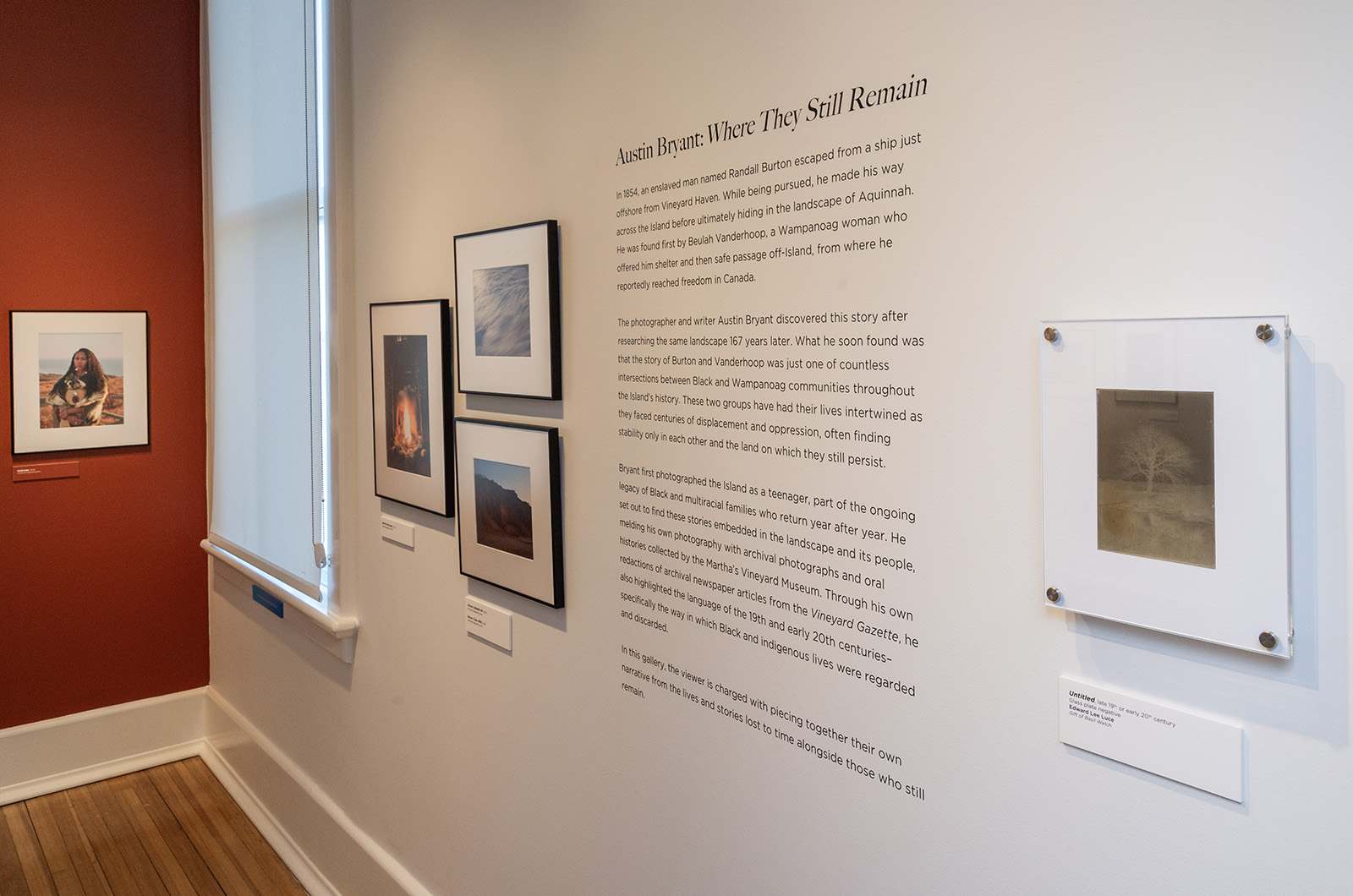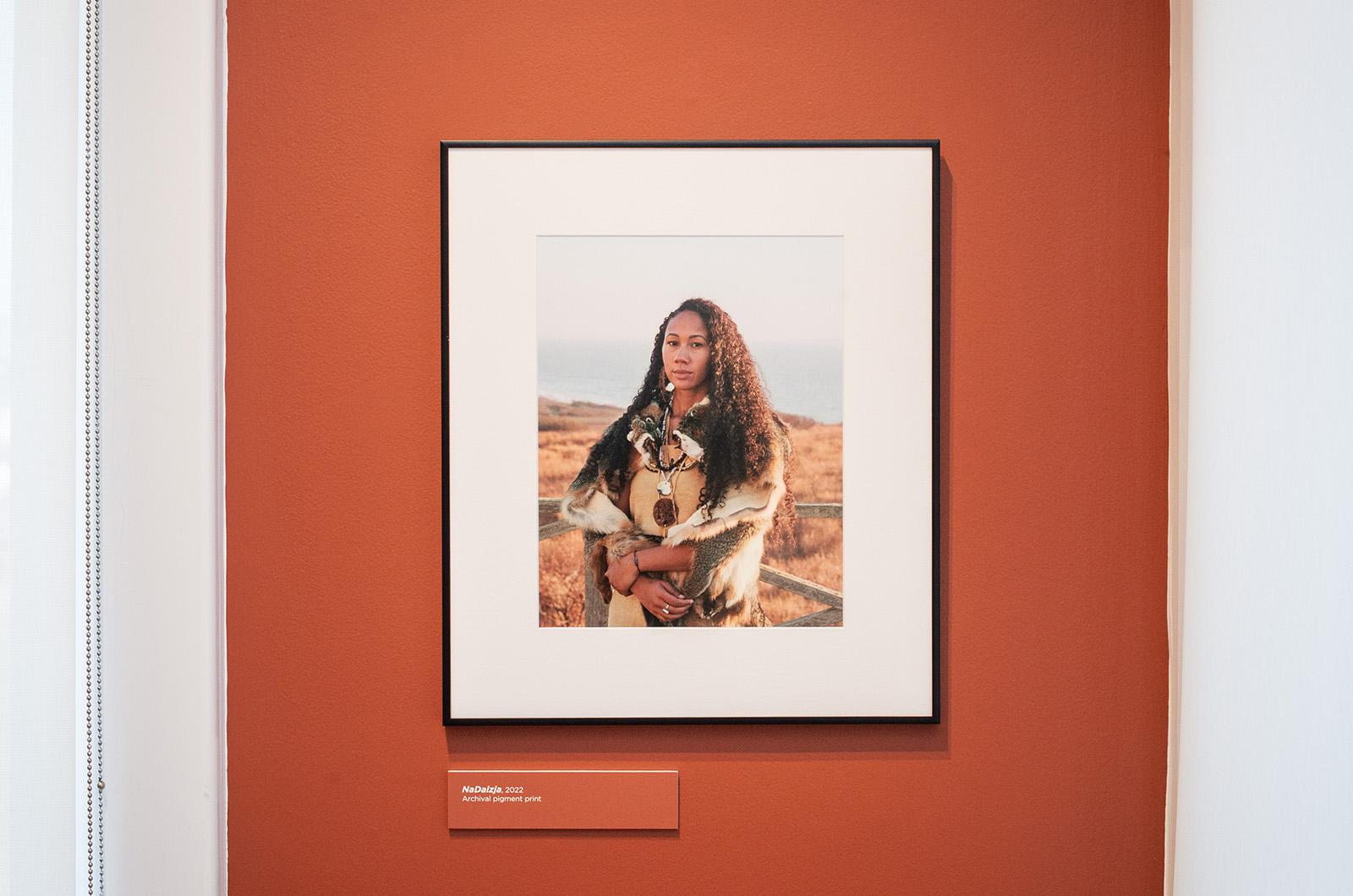Photographer Austin Bryant was visiting the Island with his family a few years ago when he pulled his car over on West Basin Road and took a picture of the serene dune landscape owned by the Wampanoag Tribe of Gay Head (Aquinnah).
On one side of the road were the cranberry bogs where the tribe has picked the tart berry for centuries. The other side, Lobsterville Beach, is where tribal members continue to fish and learn to swim.
Later, Mr. Bryant read an old newspaper article about the dedication of a new African American Heritage Trail on that same land. He learned the story of an enslaved man named Randall Burton who escaped on a boat and hid in the dunes until a Wampanoag woman named Beulah Vanderhoop found him and gave him shelter.
“It was a profound experience for me,” Mr. Bryant said. “Being a Black man and standing there in the landscape, this man Randall [and I] had this connection across 160 odd years... It kind of sent me on this deep search for more information on that story.”
While pursuing his MFA at The University of Hartford, Mr. Bryant began researching the intersection of African American and Wampanoag communities on the Island. His work became the subject of Where They Still Remain, an exhibition currently on display at the Martha’s Vineyard Museum.
The exhibition combines Mr. Bryant’s photography, archival images and newspaper articles to tell stories that were lost over time. Mr. Bryant will be giving an artist talk at the museum on Saturday, May 3 from 4 p.m. to 5 p.m.
One of his photographs on display depicts a house covered with overgrown wisteria, the vines enveloping the dwelling in an eerie mood. Mr. Bryant said the site was where Ms. Vanderhoop sheltered Mr. Burton in 1854.
Another photo is of an oak tree whose long branches cast a ghostly shadow over Tisbury Meadow Preserve’s open field. Mr. Bryant said that when he took the photo there was a string of bleached cloth hanging around the trunk resembling a row of white flags. He does not know if the tree has a historical significance, but said the sinister aspects of the image evoke many emotions which he wanted viewers to reflect upon.
“I want people to reconsider the histories that are all around them, and for me, that are embedded in the landscape,” Mr. Bryant said.
One photo puts a spotlight on a toad-shaped rock, taken on a cold February night. Mr. Bryant said the rock is important to the Wampanoag peoples’ creation story and is where tribal members would often leave messages for each other.
He included portraits of people he interviewed while researching the exhibition. Many of the subjects are Afro-Indigenous and living examples of the intersections between both communities, which he said people who visit the Island are often not aware of.
“Unless you visit the Aquinnah Cultural Center or really take the time to engage with [Wampanoag] history, it can be something that people miss entirely,” Mr. Bryant said. “I think [my exhibition] is just a reminder that these people are here with us now. They are your neighbors if you live here, or they are the people you see every day.”
Mr. Bryant said it is natural to want to categorize people under one race. As a bi-racial man, he said he wanted his exhibition to demonstrate a commonality between people that often gets lost.
“We are all pretty interconnected in general as humans....” Mr. Bryant said. “There are many intersections between us, and we’re not separated into buckets.”
There are hardly any captions throughout the entire exhibition, which Mr. Bryant did intentionally to get viewers to discern what is happening themselves. He said it brings viewers closer to the work and inspires reflection.
The only text can be found in a display of four articles from the Vineyard Gazette archive. Mr. Bryant redacted most of the words with thick black lines, to expose short phrases he said are intended to evoke powerful emotions. One of the articles reads “there was no moisture in her eyes” and another says “the hammer had fallen, and the girl also”.
“In pointing to [the words] a bit more, it’s forcing people to kind of reckon with that language....” Mr. Bryant said. “It makes it so that people can’t gloss over [the words] quickly and put a distance between themselves and these stories.”
Mr. Bryant said he hopes people who visit his exhibition leave with a deeper sense of the stories around them and the land they inhabit.
Where They Still Remain continues through June 29. Visit mvmuseum.org for more information.
Editor's Note: a previous version of this story incorrectly stated the date of Austin Bryant's talk at Martha's Vineyard Museum.









Comments
Comment policy »